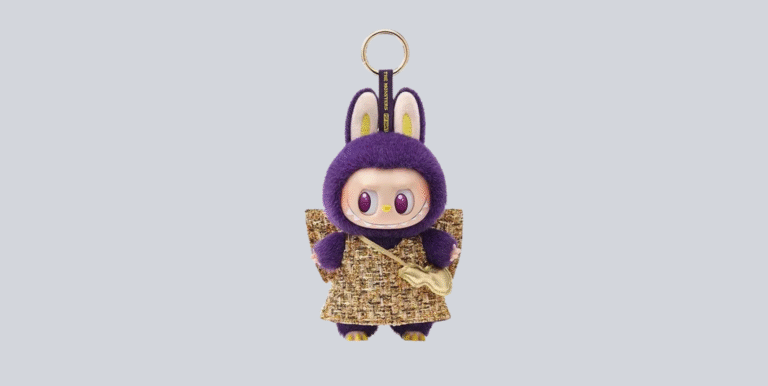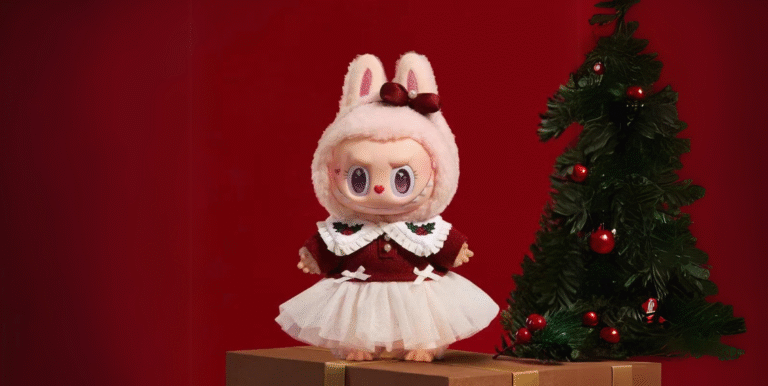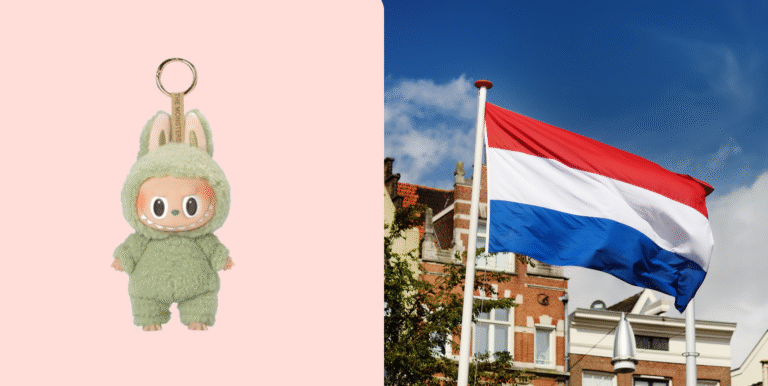What is Lafufu? Your Ultimate Guide to Labubu’s Knockoff Cousin
Art toys are a big deal, right? They’re cute, they’re cool, and some are super collectible. You’ve probably heard of Labubu, the awesome monster character by Kasing Lung and Pop Mart. Labubu is super popular!
But then, there’s this other character you might have seen around: Lafufu. People often call Lafufu the “knockoff cousin” of Labubu. It looks kinda similar, but it’s definitely not the same.
So, what’s the real story with Lafufu? This guide is here to break it all down for you. We’ll look at what Lafufu is, where it comes from, how it stacks up against the real-deal Labubu, and what you, as a collector or just a curious fan, should know.
While we explore Lafufu, it’s good to remember the amazing art that goes into original toys. You can see some fantastic examples of authentic Labubu creations to appreciate the real magic.
The Emergence of Lafufu: Unpacking the “Knockoff Cousin”
So, let’s get to the bottom of this Lafufu mystery. It’s time to unpack who, or what, this “knockoff cousin” really is.
What is Lafufu?
Lafufu is basically a character, or a series of art toys, that looks a lot like Labubu. Think of those cute, mischievous monster vibes with bunny-like ears. That’s the style!
You’ll often find Lafufu toys sold in blind boxes. That means you don’t know exactly which character or design you’re getting until you open it up. It adds a bit of surprise, which can be fun.
The main thing about Lafufu is its visual similarity to Labubu. It’s like they went to the same monster school but are definitely not twins.
Origins and Manufacturing:
When did Lafufu pop up? It seems like a pretty recent thing. As Labubu got more and more famous, Lafufu started appearing on the scene.
Most people think Lafufu toys are made in China. They usually don’t have a big brand name attached to them, or if they do, it’s a generic one you probably haven’t heard of.
Why the “knockoff” label then? Well, Lafufu isn’t usually trying to pass itself off as an actual Labubu with fake Pop Mart logos. But, the designs are so heavily inspired by Labubu that “knockoff” or “inspired-by” feels like the right description. It’s riding on Labubu’s coattails, design-wise.
Why “Cousin” and Not “Twin”?
We call Lafufu a “cousin” because while the design language is super close, it’s not an exact copy. There are usually small differences. Think of it like this: Labubu is the original trendsetter, and Lafufu is trying out a similar style.
There’s a difference between a direct fake (which tries to fool you into thinking it’s the real thing) and an “inspired-by” product. Lafufu falls more into that “inspired-by” category. It gives a similar vibe without being a direct counterfeit.
Labubu vs. Lafufu: A Head-to-Head Comparison
Alright, let’s put these two side-by-side. How does the popular Labubu compare to its look-alike, Lafufu? There are some pretty big differences.
Design and Artistry:
- Labubu: This is the original! Labubu was created by a talented artist named Kasing Lung. There’s a whole story and personality behind Labubu. Pop Mart, a well-known company, partners to produce these toys. Each Labubu series has a theme and real artistic thought put into it.
- Lafufu: With Lafufu, there’s no official artist you can point to. The designs often copy themes you see in Labubu, or just go for a general “cute monster” look. Sometimes Lafufu designs might have slightly different proportions, simpler details, or color schemes that feel a bit off compared to Labubu.
Quality and Materials:
Labubu: Genuine Labubu toys are usually made from good quality PVC or vinyl. The paint job is mostly neat and consistent. Pop Mart has quality control, so they try to make sure each toy looks great and is well-made.
Lafufu: The quality of Lafufu can be a mixed bag. Some might be okay, but many are made with thinner plastic that feels cheaper. Paint jobs can be messy, with colors bleeding or details being a bit smudged. You might find more little flaws or defects.
Branding and Packaging:
- Labubu: When you buy a Labubu, you’ll see clear Pop Mart branding. The artist, Kasing Lung, is often credited. The boxes are high-quality, with nice artwork and often a collector card inside.
- Lafufu: Lafufu packaging is usually very generic. There’s no official brand, or if there is, it’s not a recognized art toy brand. Sometimes names might be misspelled, or the box art looks a bit like a copy.
- Labubu: Labubu toys cost more. This price reflects the artist’s work, the licensing, the better quality materials, and the brand name. They are priced as collectible designer toys.
- Lafufu: Lafufu is much, much cheaper. This is a big reason people buy them. The lower price is because they don’t have those licensing fees, and they often use cheaper materials and production methods.
Collectibility and Resale Value:
- Labubu: Labubu is a well-known collectible. Some series or rare figures can even go up in value over time. People actively trade and sell them in collector communities.
- Lafufu: Lafufu toys are mostly bought just for fun and to have something cute. They don’t really have any resale value in the collector’s market. Understanding this difference is really important, as this comprehensive guide to Lafufu aims to make clear. Once you buy a Lafufu, it’s pretty much yours to enjoy, not an investment.
Why Do People Buy Lafufu? Understanding the Appeal
So, if Lafufu is a knockoff, why do people actually buy it? There are a few reasons, and they make sense for some folks.
- Affordability: This is the number one reason. Lafufu lets people enjoy that cute, monster-bunny aesthetic without shelling out the cash for an official Labubu. If you’re on a tight budget, Lafufu can seem like a good deal.
- Accessibility: Lafufu toys are super easy to find. You can spot them on big online shopping sites like AliExpress, Temu, and others. They’re just a click away for almost anyone.
- For the Look, Not the Label: Some people just really like the style. They’re not too bothered about whether it’s an official brand or made by a famous artist. They just want a cute toy for their desk or shelf.
- Customization/Play: Because Lafufu toys are cheap, people might not worry so much about them getting damaged. This can make them fun for kids to play with, or for crafty people to customize by repainting or modifying them.
- Introduction to Art Toys: For some, Lafufu might be their very first step into the world of art toys. They might buy a Lafufu because it’s cheap and cute, and then discover the wider world of designer toys, including Labubu, later on.
How to Identify Lafufu (and Distinguish it from Authentic Labubu)
Want to make sure you’re getting a real Labubu and not a Lafufu by mistake? Or maybe you’re just curious how to spot the differences. Here are some key things to look out for.
Key Telltale Signs of Lafufu:
- Price: This is a big one. If you see a “Labubu” being sold for a super, super low price, be suspicious. It’s very likely a Lafufu. Real Labubus have a certain price range.
- Branding: Look for official Pop Mart logos and Kasing Lung’s name on authentic Labubu packaging and sometimes on the toy itself. Lafufu will either have no branding, generic branding, or sometimes even misspelled attempts at looking official.
- Seller: Where are you buying it from? Official Labubu toys are sold by authorized retailers, the Pop Mart official store, and reputable toy shops. Lafufu is common on large marketplace sites like AliExpress or Temu, directly from unverified sellers.
- Packaging Details: Check out the box. Real Labubu boxes are usually well-made, with clear, crisp printing. Lafufu boxes might look flimsy, have blurry images, or just feel cheap. Look for official collector cards too; Lafufu often skips these or has poor-quality ones.
- Physical Feel and Finish: If you can handle the toy, Lafufu often feels lighter. The plastic might be thinner. You might see more obvious seams from the molding process, or the paint job could be a bit sloppy with uneven lines or specks of dirt in the paint.
Importance of Due Diligence for Collectors:
If you’re serious about collecting, it’s important to do your homework. Knowing these differences helps you protect your money and make sure you’re getting what you pay for. It also helps support the original artists and companies who put their creativity and effort into making these awesome toys.
The Ethical Considerations: Art, Inspiration, and Imitation
This whole Lafufu and Labubu thing brings up some interesting questions about art, getting inspired, and outright copying. It’s a bit of a gray area sometimes.
In the art toy world, like in many creative fields, there’s a lot of talk about intellectual property – that’s the idea that artists own their creations. When knockoffs or heavily “inspired” products appear, it can affect the original artists. They might not get the credit or the sales they deserve.
Companies like Pop Mart invest a lot in working with artists and producing high-quality toys. The knockoff culture can make it harder for them too.
As a buyer, you have a choice. Knowing where your toys come from and who made them can be part of the fun of collecting.
People indeed want affordable options, and that’s understandable. But it’s also good to respect the work that goes into original creations. It’s a balancing act! This article isn’t here to judge, just to give you the info so you can make your own informed choices.
When you’re aiming for genuine products, like the highly sought-after Labubu The Monsters series, making sure of its authenticity is super important. You want to get what you pay for and support the creators.
Conclusion
So, there you have it! Lafufu is basically a budget-friendly toy that looks a lot like Labubu. It gives you a similar cute monster vibe, but is very different when it comes to quality, who made it, and whether it’s a collectible.
Knowing these differences means you can make choices that fit your budget, what you care about as a collector (or just a fan!), and your overall toy-collecting goals.
While Lafufu might be a fun, cheap option for some, the real magic, the detailed artistry, and the long-term value usually stick with the original creations like Labubu. They just have that special something!
What are your thoughts? Have you seen Lafufu around, or do you own any? Maybe you have some experience with similar art toys? Share your thoughts in the comments below – we’d love to hear them!
Frequently Asked Questions
Got more questions? Here are some common ones about Lafufu:
Is Lafufu illegal?
Lafufu typically operates in a legal gray area as an “inspired-by” product rather than a direct counterfeit, unless it uses fake trademarks.
Is Lafufu the same quality as Labubu?
No, Lafufu is generally made with lower-cost materials and less quality control compared to official Labubu products.
Can Lafufu toys become valuable collectibles?
It’s highly unlikely Lafufu toys will become valuable collectibles due to their lack of originality and official artist backing.
Where are Lafufu toys made?
Most Lafufu toys are manufactured in China by uncredited or generic factories.
If I like the style, should I buy Lafufu or save up for Labubu?
Choose Lafufu for a cheap aesthetic, or save for an authentic Labubu if you value originality, quality, and collectibility.




Leave a comment